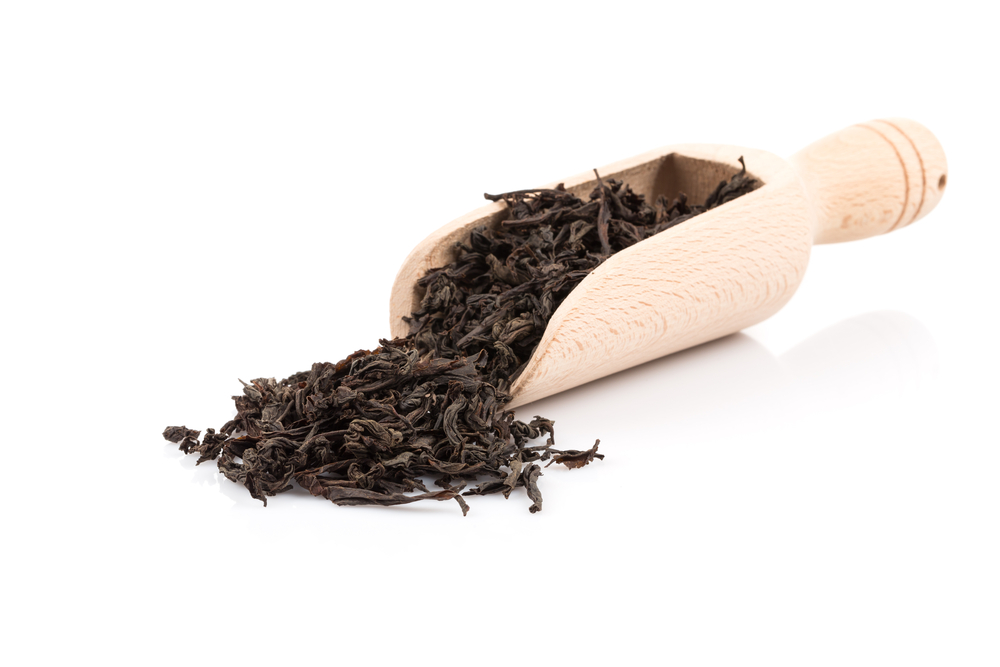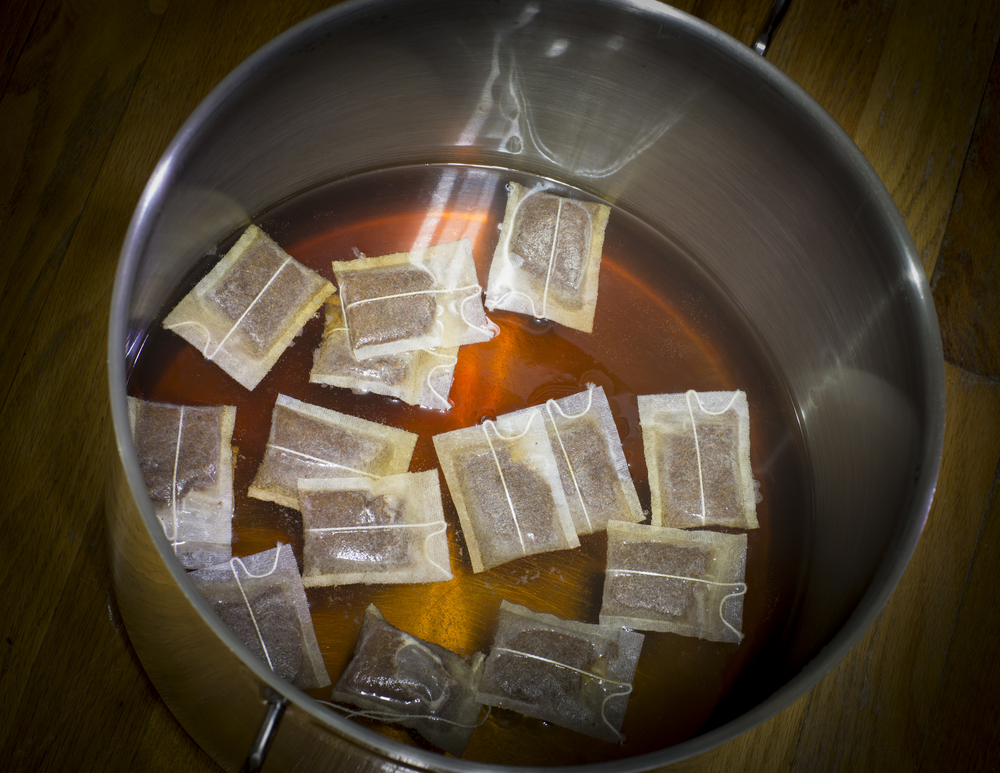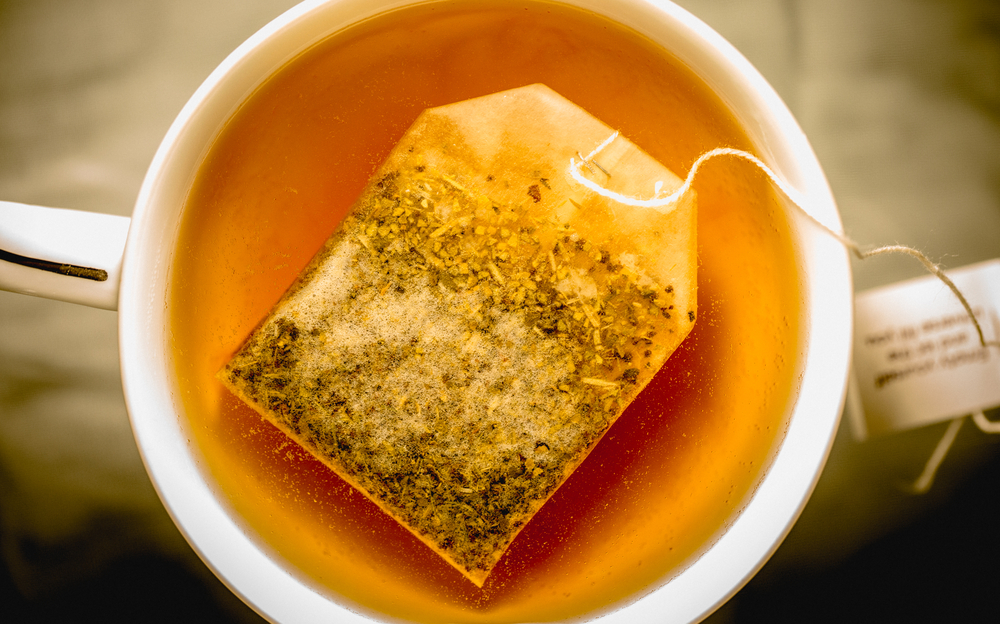Each home brewer has different preferences for the type of tea and how long to steep tea for their kombucha. No matter your method, use the highest-quality ingredients to get the best results from your brew. Learn more about kombucha making with this guide.
Table of Contents
Which Tea Is Best for Making Kombucha?
Black or green tea is the best type of tea for making kombucha. These teas are full of tannins and caffeine that feed the SCOBY. Pure green or oolong tea also has theanine and nitrogen, filling fermented tea with probiotics and antioxidants.
All tea comes from the Camellia sinensis plant, but each type of tea has a different processing method. For the best batch of kombucha, use a combination of green and black tea.
You can also use white tea to make kombucha. White tea comes from the tiniest, most delicate leaves at the top of the tea plant. They are dried gently in the sun and produce a mild-flavored kombucha. Consider brewing with white tea leaves if you find regular kombucha too strong.
Avoid:
- Flavored teas, like chai tea—the flavorings can weaken the kombucha culture and interfere with the fermentation process.
- Herbal teas or herbal infusions—these additional ingredients will weaken your booch.
- Caffeine-free tea—caffeine supplies the tea with nitrogen and helps the kombucha tea ferment properly.
Should You Use Tea Bags or Loose-Leaf Tea When You Steep Tea For Kombucha?
You can use either tea bags or loose-leaf tea to brew kombucha. The tea pieces in tea bags are often made from the ‘leftovers’ of the manufacturing process. Tea bags make fine tea, but loose-leaf tea is of higher quality and tastes better. Tea bags are easy to find at most grocery stores and can be stored indefinitely on the shelf.

Loose-leaf tea contains larger tea leaves. Because they are bigger, they expand more in hot water and infuse their taste and health benefits into the brew.
Loose-leaf tea is not mass-produced and is usually fresher than the bags you buy at the store. If you can use loose-leaf tea for your kombucha, do so. But if you prefer tea bags, your kombucha will still be healthy and delicious.
What Is the Water/Tea Ratio for Kombucha?
Kombucha generally requires 4-6 teaspoons of loose-leaf tea (or 4-6 tea bags) per gallon batch (16 cups).
You don’t need to boil a whole gallon of water, though. Boil four cups of water and add your tea. Use the remaining water to help cool your brew to room temperature.

If you find your homebrewed kombucha too strong, use less tea the next time you make a batch of kombucha.
As your brew ferments, any bitterness in the tea will dissipate. Although this may seem like a lot of tea initially, I suggest you try it before altering the recipe. The beauty of home brewing is that you can adjust tastes to your liking.
How Long Should You Steep Tea When Brewing Kombucha?
Depending on the type of tea you use, steep the tea for between five and thirty minutes. Your goal is to steep for long enough that all beneficial tannins, aromatics, and caffeine get released into your tea without making it too bitter.
If using tea bags, brew for about five minutes. This allows the flavor to develop fully and the antioxidants to be released into the tea brew. Since tea bags have tiny leaf pieces, their flavor and caffeine rapidly release into the hot water.
If you use loose-leaf tea, steep it for up to thirty minutes. The beneficial tea properties take longer to release from larger tea leaves, so you’ll want to steep loose-leaf tea longer than tea bags.
After steeping, cool your freshly brewed tea to room temperature. Hot tea can kill the live cultures in the kombucha SCOBY (symbiotic culture of bacteria and yeast). If this happens, your SCOBY will die, and you’ll have to get a new one.
Is It Possible to Steep the Tea for Too Long?
Steeping the tea for too long will make the finished brew extremely bitter.
Stick with five minutes for tea bags and no more than thirty minutes for loose-leaf tea. The more you make your own kombucha, the easier it will be to adjust the steeping time for your homebrew.
If your kombucha is too bitter, you can always turn it into kombucha vinegar!
Do You Have to Boil the Tea for Kombucha?
You can make kombucha in two ways: a hot brew or a cold brew. Hot brewing means you’ll need to wait until your tea is at room temperature before adding your SCOBY. Cold brew requires a longer brewing time, but you can use it immediately once your tea is done.
If you use tap water, you’ll want to use the hot brew method. Heat your water and let it boil for five minutes. This removes chlorine, which can wear down your SCOBY over time. After five minutes, remove it from the heat and add your tea and sugar. Cool before adding your SCOBY.
If you prefer cold brew, use filtered water. Add your filtered water and tea to a glass jar. Let it steep for twelve to thirty-six hours out of direct sunlight. Add your sugar and let it sit until it dissolves. Then it’s ready to brew your kombucha.
How Much Sugar Should You Add to the Tea?
You’ll need one cup of white sugar per gallon of kombucha.
You need sugar to feed the kombucha cultures and produce properly fermented tea. During fermentation, the SCOBY ‘eats’ the sugar, so your final kombucha won’t taste like sweet tea. The sugar will break down into glucose and fructose, which are easier on the glycemic index and won’t raise blood sugar.
If you’d like to make a different amount of kombucha, follow this guide:
| Amount of kombucha | Sugar |
| 2 gallons | 2 cups |
| Half-gallon (8 cups) | 1/2 cup |
| 1 quart | 1/4 cup |
Even though sugar substitutes are popular now, they won’t work for kombucha. The SCOBY needs cane sugar (also known as raw sugar, white sugar, or table sugar) to ferment.
Avoid these sugars when making kombucha at home:
- agave
- honey
- maple syrup
- molasses
- Pyure
- Swerve
The exact amount of sugar you add is up to you. If it’s your first time brewing kombucha, use the ratios above. As you get more comfortable with the brewing process, you may want to tweak and adjust the amount of sugar or the amount of time you steep your tea.

